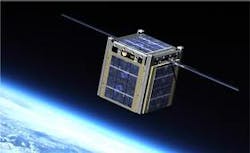NASA reaches out to industry for ideas on next-generation small satellite technologies
Small satellites are characterized by the organization as typically weighing less than 400 pounds (180 kilograms) and being launched as secondary payloads on rockets carrying larger spacecraft. Included in the small satellite category are softball-sized CubeSats, small, cube-shaped spacecraft able to carry small payloads, and even smaller experimental spacecraft.
"NASA's Edison SmallSat program helps to continue America's leadership in space through the further development of this class of satellites -- small, agile and relatively inexpensive spacecraft that could perform many tasks in space enabling new missions and providing unique educational opportunities," Michael Gazarik, director of NASA's Space Technology Program, explains. "These spacecraft represent a new opportunity among the many ways that NASA can approach its diverse goals in science, exploration and education."
"Encouraging the growth of small-spacecraft technology also benefits our economy," says Andrew Petro, Edison program executive at NASA’s headquarters in Washingon. "Many of the technologies that enable small spacecraft come from the world of small business, where commercial practices provide innovative and cost-effective solutions. Those technologies will continue to advance as demand and competition drive companies to excel."
Small spacecraft can accomplish new types of missions never before possible, and they are expected to provide space access to more technologists and scientists, says a spokesperson. The assumption is that their small size means they are less expensive to build and launch.
Executive summaries of proposals must be submitted by 4 March 2012. NASA expects to invite full proposals this spring, with selections made this fall. A selected project must be completed within two to three years at a total cost of no more than $15 million. The number of awards will depend on the quality and cost of proposals and availability of funding.
NASA's Ames Research Center at Moffett Field, Calif., manages the Edison Small Satellite Demonstration Program for the Space Technology Program.
For more, visit http://tinyurl.com/7an7lcs

Courtney Howard | Executive Editor
Courtney, as executive editor, enjoys writing about all things electronics and avionics in PennWell’s burgeoning Aerospace and Defense Group, which encompasses Military & Aerospace Electronics, Avionics Intelligence, the Avionics Europe conference, and much more. She’s also a self-proclaimed social-media maven, mil-aero nerd, and avid avionics geek. Connect with Courtney at [email protected], @coho on Twitter, and on LinkedIn.

